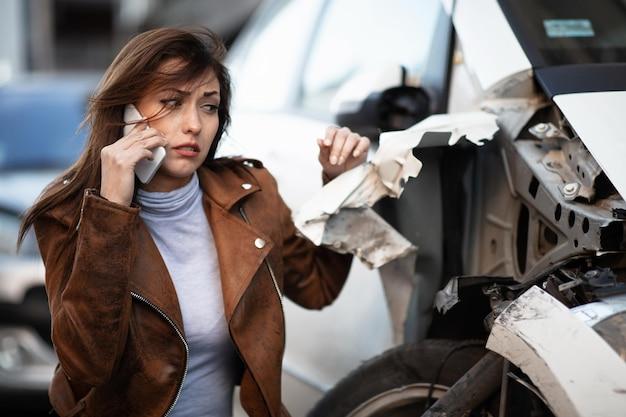Introduction
Hit and run accidents are a dangerous and all-too-common occurrence on our roads. These incidents often leave victims in a state of shock, confusion, and uncertainty. One of the most pressing questions that arises in such cases is: what happens to hit and run drivers who are later found by their license plate?
In this blog post, we will explore the legal consequences that these drivers face, discuss the process of identifying them through their license plates, and share some compelling case studies to illustrate the impact of these incidents on both the victims and the perpetrators.
Legal Consequences of a Hit and Run
The legal consequences for hit and run drivers vary depending on the jurisdiction and the severity of the accident. Generally, these offenses can be classified into two categories:
Misdemeanors: Typically involve property damage, minor injuries, or no injuries at all. Penalties may include:
- Fines
- Jail time
- Community service
- Suspension or revocation of driver’s license
- Points on driver’s record
Felonies: Usually involve severe injuries, fatalities, or extensive property damage. Penalties may include:
- Larger fines
- Lengthier jail time or imprisonment
- Permanent loss of driving privileges
- Restitution to victims
Identifying Hit and Run Drivers Through License Plate Recognition
License plate recognition technology, surveillance cameras, and witness testimonies often play a crucial role in identifying hit and run drivers. Law enforcement agencies can use these tools to track down and apprehend the culprits. Once identified, these drivers may face both criminal and civil penalties, including potential lawsuits from victims seeking compensation for damages.
Case Studies
To better understand the consequences of hit and run accidents, let’s delve into three real-life case studies that demonstrate how the legal system and modern technology have helped bring justice to victims.
Case Study 1: The High-Speed Chase
In 2020, a driver in Los Angeles struck a pedestrian in a crosswalk and fled the scene. Witnesses provided the police with a description of the vehicle and its license plate number. Using this information, the police located the suspect’s vehicle and engaged in a high-speed chase. The driver was eventually apprehended and charged with felony hit and run, among other charges. The victim, who suffered serious injuries, was able to seek compensation for medical expenses and lost wages.
Case Study 2: The Unsuspecting Witness
In 2019, a hit and run incident in New York left a bicyclist severely injured. A witness managed to capture the fleeing vehicle’s license plate on their smartphone. The police were able to track down the driver, who was arrested and charged with leaving the scene of an accident resulting in serious injury. The victim pursued a civil lawsuit against the driver and was awarded compensation for medical expenses, lost wages, and pain and suffering.
Case Study 3: The Social Media Sleuths
In 2021, a hit and run accident in Chicago left a motorcyclist with multiple broken bones. A surveillance camera captured the incident, but the license plate was not clearly visible. The video was shared on social media, where users were able to enhance the image and identify the license plate number. The police located and arrested the driver, who was charged with felony hit and run. The motorcyclist was able to file a civil lawsuit against the driver and received compensation for damages.
Conclusion
Hit and run accidents are a serious offense, and when drivers are later found by their license plate, they often face significant legal consequences. Technology, law enforcement, and public assistance play a vital role in identifying and apprehending these drivers, bringing justice to victims and their families.
By understanding the consequences of these crimes, we can continue to raise awareness about the importance of responsible driving and the necessity of stopping and assisting in the event of an accident. In doing so, we can work together to create safer roads for everyone.
Preventing Hit and Run Accidents
While it’s crucial to hold hit and run drivers accountable, it’s equally important to focus on preventing these incidents in the first place. Here are some steps that both drivers and pedestrians can take to minimize the risk of hit and run accidents:
- Stay vigilant: Always be aware of your surroundings, whether you’re a driver or a pedestrian. Avoid distractions such as using your phone or engaging in other activities that may impair your ability to react quickly.
- Follow traffic rules: Adhering to speed limits, traffic signals, and road signs can significantly reduce the risk of accidents. Drivers should also give pedestrians the right of way when required.
- Practice defensive driving: Anticipate potential hazards and maintain a safe distance from other vehicles on the road. Always be prepared to react to any unexpected situations.
- Improve visibility: Use headlights, taillights, and turn signals as required, and wear reflective clothing or gear if you’re a pedestrian or cyclist, especially during nighttime or low-light conditions.
- Report suspicious behavior: If you witness an accident or see someone driving recklessly, report it to the authorities as soon as it is safe to do so. Your actions may help prevent a hit and run incident or aid in the apprehension of a responsible party.
Final Thoughts
Hit and run accidents have devastating consequences for victims and their families, and it’s essential to bring the responsible parties to justice. Through the combined efforts of law enforcement, technology, and public assistance, we can identify and apprehend hit and run drivers, ensuring that they face the legal consequences of their actions.
By promoting responsible driving and taking preventative measures, we can work together to create a safer environment for all road users. Let’s strive to make hit and run accidents a thing of the past and ensure that our streets are safe and secure for everyone.




